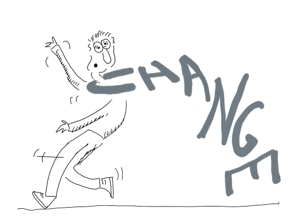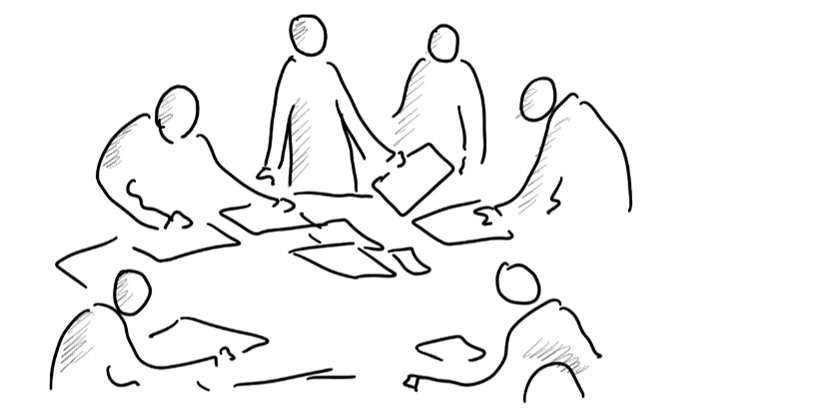Section 07: Making hard choices
The essence of strategic planning is prioritising. It is about letting things go; about avoiding the temptation to simply add to the shopping list. There may be a need to close down programmes and perhaps have strategic funerals to celebrate elements of your work that have been good, but are no longer a priority. It may be important to mark endings. In a changing environment, prioritisation is crucial so that we can ‘take change by the hand and lead it where we want to go, rather than waiting for it to grab us by the throat and drag us where we don’t want to go.’ (John Adair 2002:221)
The more people involved in these decisions, the better for ownership and commitment, though fewer people make decision-making easier and quicker.
Although it may be more difficult to take hard decisions virtually without the nuances of body language and informal discussions, once again Google JamBoard and Mural provide useful online platforms for participatory discussions. In making hard strategy choices, the following three tools have often proved illuminating:
Two simple questions
Painful prioritising
Portfolio analysis
7.1 Two simple questions
Much of strategic planning can be boiled down to two simple questions:
Who do you exist to serve?
If these people knew what you could offer, what would they ask you to do (so that their lives would be changed in the long term)? For instance, they could ask you: “Help us… learn basic accounting / get a Fairtrade certification / get better access to clean water”… What would they ask YOU?
Getting NGOs to answer these questions through listening to stakeholders and then prioritising themselves is the essence of much effective strategising.
7.2 Painful prioritising
This exercise can be helpful in bringing to light implicit priorities.
If running a face to face workshop: Write the names of all your programmes / projects on a flipchart or whiteboard. Get people to write these out on separate pieces of paper. Put out three buckets (or boxes or just identify three piles) on a table. Label them A, B, and C.
If you need to run a remote workshop you could set up this activity on a virtual whiteboard, or have people express their preferences by using other virtual collaboration tools (follow the activity guide for further details and templates).
Then:
Ask the question, “If revenue were to drop by 50%, which programmes would we stop doing first?” Have each person put these in the bucket/box/ area C.
Next ask, “If revenue dropped by 75% and we had to move onto the next round, what would we stop doing?” These will go in the bucket/box/area B.
Last ask, “What would we never stop doing?” Have each person put their response in the bucket/box/area A.
When everyone has finished, look at what’s in each bucket/box/area and discuss the results:
What is it clear that you should stop doing?
What is it clear you should never stop doing?
Here you can download a guide to help you facilitate this activity, with options for both face-to-face and virtual meetings.
7.3 Portfolio analysis
Some NGOs have used portfolio analysis to analyse and classify their different programmes into four broad categories:
In strategic planning it may be worth thinking:
How well balanced is the portfolio (between, for example, creative but risky projects and stable projects)?
How might each service or project move between boxes over the next year or so?
How could your ‘question marks’ be turned into ‘stars’? Would it be worth the investment of time, effort and other resources?
What should happen to the activities in Square 4 (e.g. invest in them, hand them over, float them off, close them down)?
What are your NGO’s current plans for developing new areas of activity? Any NGO should be thinking about the future as well as the present.
Last updated

